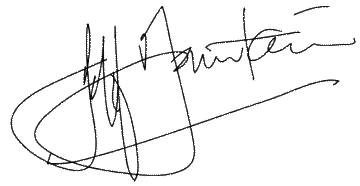4 aug 2010
The world’s top cyclists swept across Rotterdam’s Erasmus Bridge last month to start the Tour de France. Rotterdam is proud of both its impressive bridge and its namesake, the sixteenth century Christian humanist. The city’s hospital and university are also named after Erasmus, born Geert Geertsen in Rotterdam, October 27, 1466 (or thereabouts).
The city’s association with the great European scholar, however, is a little dubious. For Geert’s unmarried mother, a resident of Gouda, one day went to see the local priest for confession. She was pregnant–with his child.
Which explains why Geert was born in the anonymity of the big city. Four years later, after the dust had settled, Geert’s mother moved back to Gouda 25 kilometres away with her son, where, to his credit, the priest supported the child in his upbringing. Geert, it seemed, never returned to Rotterdam for the rest of his seventy years. Neither would he have been able to remember much or anything of the city forever associated with his name.
Deventer, just a twenty-minute drive from where I live, actually has a much greater claim on the making of one of Europe’s most celebrated scholars. The 12-year old Geert enrolled in the Latin School there run by the Brothers of the Common Life, where also Thomas a Kempis had earlier studied. After five years of mastering Latin, he moved on to an Augustinian monastery to continue his studies, becoming a monk and then a priest. Disliking the monastery lifestyle, he moved on to Paris in his late twenties to study more theology under the Franciscans, which he also didn’t enjoy.
Fame
A common Dutch name like Geert Geertsen didn’t suit his scholastic ambitions, so he adopted the Latin name Desiderius Erasmus (‘the desired beloved’). To make ends meet, he tutored wealthy students, composing manuals for them. These he later published as handbooks on oratory, writing and eloquence. These works became great sellers, and over the years Erasmus re-edited and improved them as Colloquies (Colloquia), Adages (Adagia), and On the Method of Study (De Ratione Studii). Very soon they made him famous across Europe and launched him on a peripatetic (go look it up) scholastic lifestyle that he would follow all his life.
Universities, rulers and churches competed to attract his services. In 1499 his reputation opened doors for him in England where he befriended Thomas More, and became a protégé of Henry VIII. But he refused to settle down and moved on to Louvain in Belgium, then to Italy, stopping in Turin, Venice, Bologna, Rome and Naples.
On this trip, Pope Adrian VI offered to make him a cardinal. Adrian, the only Dutch pope in history and the last non-Italian pope until John-Paul II, had been Erasmus’ tutor at Louvain and had also studied at the Latin School in Deventer. Yet again, Erasmus refused and crossed back over the Alps, returning to Cambridge for three years.
There he published Praise of Folly. a satirical essay exposing the corruption and abuses in the Catholic Church he had observed first hand on his travels, and which is considered one of the most notable works of the Renaissance.
It also proved to be a catalyst of the Protestant Reformation. Unlike the humanists south of the Alps, Erasmus and his fellow Christian humanists were concerned with returning to the Biblical sources of the Christian faith, with particular focus on the original languages. Erasmus saw himself as a preacher of righteousness and of the true teachings of Christ.
Egg
The publication in 1516 of his new Greek edition of the New Testament in Basel, with a parallel Latin translation, provided Luther and other Reformers with the tools with which to launch their revolution.
Accused of laying the egg which Luther hatched, he admitted that he had expected ‘quite another bird’. His aim had been reform without schism. While initially sympathetic with Luther, his neutrality offended Protestant leadership. Having moved to Antwerp and Louvain away from his Catholic critics, he was kept on the move by Protestant opposition. Finally he returned to Basel to see his last work printed, and died there in 1536.
A few days ago, on our Heritage Tour, we stood before his memorial stone in the Basel Münster, and read the carved gold letters reminding us of his humble birth:
‘Erasmus von Rotterdam’.
Till next week,
Jeffrey of Wellington
Till next week,

